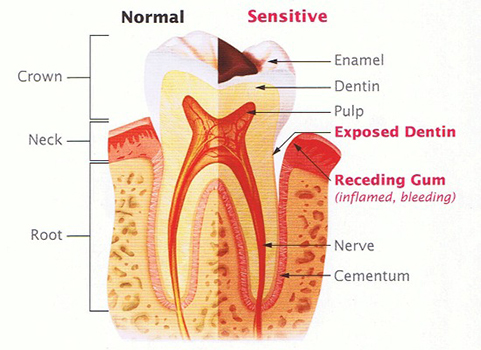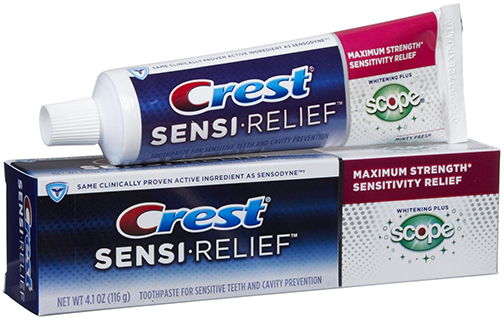Getting to the Root of Dental Hypersensitivity
Tooth sensitivity is commonly seen at St. Lawrence Dentistry and is caused by dentin exposure. This is a porous tissue because it contains ‘dentinal tubules. These are shaped like straws and you would need a microscope to see them. The tubules lead to the tooth nerves, which when exposed and unprotected, result in nerve stimulation and sensation of pain. Healthy enamel and gums cover tubule openings and prevent stimuli from foods and drinks or touch from reaching the nerve. However, it can be exposed due to enamel erosion or recession of the gums. The roots, which are not covered by hard enamel, contain thousands of tiny tubules or pores that run from the outside of the tooth and right to the central nerve. With exposed dentin, the tubules can be stimulated by temperature changes and other stimuli which can cause the teeth to be painful. Exposed tubules contain fluid and nerve endings. When a tubule in sensitive dentin becomes exposed, ‘trigger’ stimuli cause the fluid to move rapidly. It is believed that this movement of fluid excites the nerve endings, resulting in pain.

Chronic traumas like grinding of teeth and acute traumas like chipping a tooth can lead to dentin exposure. Gum recession, toothbrush abrasion, acidic foods, pulp inflammation, and dry mouth are also all associated with dentin exposure and tooth sensitivity
Dr. Hawryluk can look for the signs of dentin exposure. He can also run tests to determine the underlying cause of tooth sensitivity. By properly identifying the cause of sensitivity, the dentist will be able to recommend the appropriate treatment.
Different stimuli trigger sensitivity in different ways. Hot causes tubule expansion, inward pressure, and pain. Acid and sugar create an osmotic pressure leading to an outward fluid flow from the tubules leading to pain. Cold causes tubule contraction, hence a fast outer fluid flow from the tubules resulting in fast sharp pain. Touch stimuli remove surface fluid causing fast outward fluid flow, resulting in fast and sharp pain.

There are several treatments for teeth sensitivity. Potassium Nitrate (5%) is the number one recommended desensitizing ingredient for at-home sensitivity relief. This is a clinically proven ingredient that numbs the nerve and insulates your teeth from sensitivity. It is effective in helping relieve the sensitivity caused by fluid flow discussed above. One very effective product is Crest Sensi-Relief. This combines the cavity prevention benefits of fluoride, contains potassium nitrate, and also has the fresh breath advantages of scope.
Other treatments are the application of in-office fluoride to the sensitive areas of the teeth to strengthen the tooth enamel and reduce pain. If receding gums cause sensitive teeth, the dentist may apply a sealant to cover the exposed root surfaces. A root canal is an option recommended if other treatments fail. This procedure is used to treat problems in the tooth’s soft core or dental pulp.

While there are a number of treatments available for sensitive teeth, it is best that the dentist recommend the one that will work best in your situation, taking into account various factors. The best way to treat sensitive teeth is to seek the dentist’s help in diagnosing and addressing the problem.
St. Lawrence Dentistry is located in the Port Credit District of Mississauga Canada and offers treatment for sensitive teeth. To learn more about our sensitivity treatments please visit us here:



